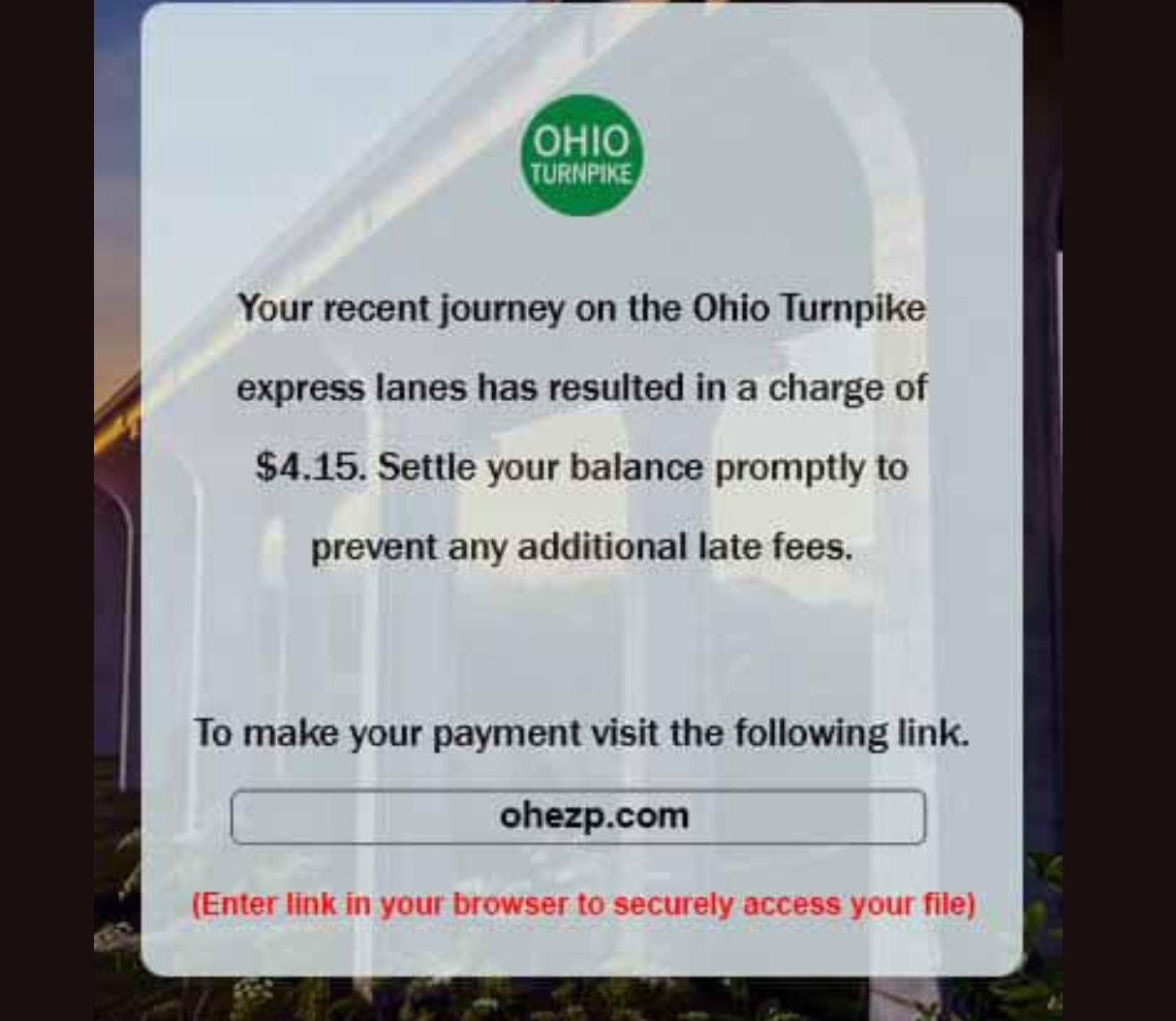Ohio residents are being hit by a text scam impersonating Ohio Turnpike. The text message asks recipients to visit Ohezp.com to pay charge fee for using Ohio Turnpike Express Lanes or would be charged additional late fees.
This has caused lots of panic in the community, especially for those who own a vehicle and had used the Express Lane in the past. The Ohezp.com Ohio Turnpike text is a phishing scam designed to steal your personal and credit card details.
If you’ve gotten one of such text, here’s why it’s a scam, how the scam works, and how to stay protected;
Spotting The Red Flags: Why is Ohezp.com Text a Scam?
The text says ”your recent journey on the Ohio Turnpike Express Lanes has resulted in a charge of $4.59. Settle your balance promptly to prevent any additional late fees. To make your payment visit the following link; ohezp.com”
This might seem real especially as it uses Ohio Turnpike logo, but one point to consider – The Ohio Turnpike does NOT request its customers to make payments by text. Collections of unpaid tolls and/or toll violations do NOT occur by text either.
So aside that, what other red flags does the text message have?
- Ohezp.com isn’t the legit Ohio Turnpike website. The legit site is ohioturnpike.org.
- The text message does not contain vital information ( fails to mention the toll booth used and the recipients license plate number)
- The website ‘Ohezp.com’ was registered in November, 2024 by an anonymous person– this shows it lacks reputation of any sort.
- A cybersecurity tool ‘VirusTotal’ reveals the website IP address is from Bulgaria instead of USA.

How Does The Scam Work?
Clicking on the link in the fraudulent text message takes victims to a spoofed website that ask for credit card details for the toll fee. People who provide their credit card info would become a victim of credit card fraud.
The scammers would not only deduct the fake outstanding balance but would make huge withdrawals.
Also, mere clicking on the link could expose your mobile device to viruses, spywares, or malware. This is because the website could’ve a malware program running in the background. Malware is software that is installed on a computer without the user’s consent and that performs malicious actions, such as stealing passwords or money. Malware can be installed in a variety of ways, including through email attachments, drive-by downloads, or by clicking on links in malicious websites.
Precaution
Here’s what to do If you received a scam text message;
- Don’t attempt to click on the link no matter how legit it looks. Clicking it would either direct you to a fraudulent website or install malware into your device.
- Block The Sender Number. You can do this by flagging the telephone number as spam.
- Delete The Text Message. Deleting the text message will prevent you from mistakenly replying or clicking on it.
What Victims of This Scam Should Do;
Inform Their Credit Card Company
If you provided your credit card details on this scam site, the first step you should take is calling your credit card company. They need to know that your card details have been compromised so as to closely monitor and prevent any unauthorized charges.
Place a Credit Freeze or Fraud Alert
Fraud alert is sort of like a two-factor authentication process for accessing your credit, whereas a credit freeze blocks anyone from accessing your credit — until you remove it. The credit freeze is the best option for you, if you know you wouldn’t be using the credit card anytime soon.
Scan Their Device with a Malware Checker Tool
There’s a likelihood that your device has been infested by malware or spyware after visiting the spoofed website. Scanning your device with a malware removal tool will detect and remove any viruses, spyware, or other malicious programs.
see latest toll scam – indiana-road.com scam text
